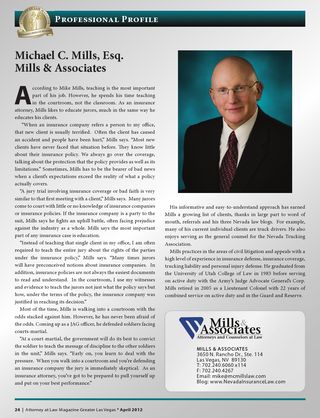Buck v. Greyhound Lines, Inc.
Common law has always recognized that when the negligence of multiple tortfeasors combines to injure the Plaintiff, all of the tortfeasors are jointly and severally liable for the damage done. In other words, the Plaintiff can sue one or all of the tortfeasors and if a judgment is entered, can collect that judgment from any or all judgment debtors.
Tort reformers have always resented this rule. They argue that just because someone has deep pockets does not mean that that person should pay more than his fair share of the damages. In other words, why should someone who is 5% responsible for the accident pay 100% of the damages?. Tort reformers argue for a rule of strict several liability where everyone pays only for the share of the damage that they caused.
The Nevada Legislature must have imagined that it was creating a rule of several liability when it passed N.R.S. 41.141(4) which reads:
4. Where recovery is allowed against more than one defendant in such an action, except as otherwise provided in subsection 5, each defendant is severally liable to the plaintiff only for that portion of the judgment which represents the percentage of negligence attributable to him.
However, the case of Buck v. Greyhound Lines, Inc., 105 Nev. 756, 783 P.2d 437 (1989) interpreted that law in a way that creates a huge exception to the legislature’s rule of several liability. In Buck, two infants were passengers in a car driven by their mother. While attempting to make a U-turn on the highway, the car stalled, blocking one of the lanes. Despite attempts to divert traffic, a bus plowed into the stalled car, causing injuries to the children.
One of the questions before the court was whether the infants, who had done nothing to contribute to the accident, should be allowed to collect their damages based on a scheme of several liability only. Or could the infants collect their damages jointly and severally, thus allowing them to take advantage of the bus’s much larger liability policy. The court focused on the statute’s words “in such an action” and put its spin on what those words mean. According to the court, the law of several liability was meant to apply only in those actions where “comparative negligence is asserted as a defense”. See N.R.S. 41.141(1). In other words, the mother, who was comparatively at fault, could only claim several liability. Whereas her children, who did not contribute in any way to cause the accident, would be allowed to collect their damages both jointly and severally.
Mills & Associates has developed strategies targeting joint and several liability claims. Please talk to us about how to try and limit a claimant’s damages to several liability only.
 Follow
Follow Email
Email


